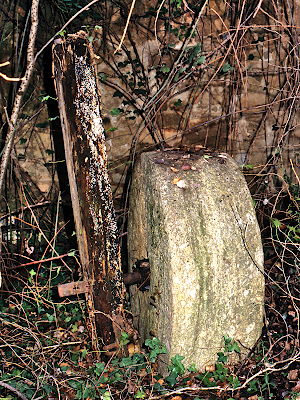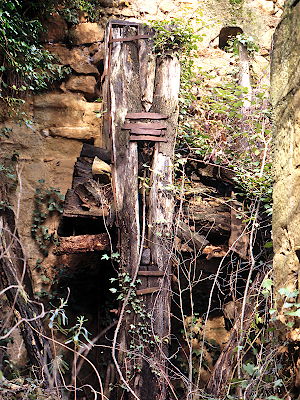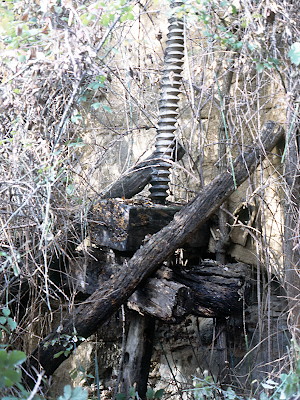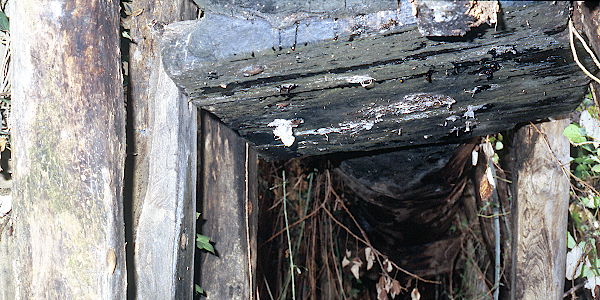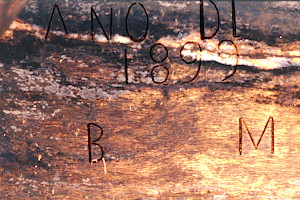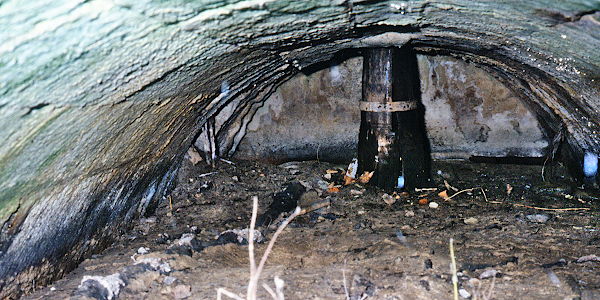
Santa Eulalia la Mayor





The pond is large and narrowly triangular (2) and built with big ashlar stones, just like the cubo (3). It is difficult to understand how this constellation with pond and pressure pit at opposite sides of the road, could have worked. We couldn't find any communication between both vessels and, even if there was, there is no way that full use could be made of the entire volume of the pressure pit. At least not without pumping the water up.
In the beginning (4 left) the pressure pit was situated at the wide end of the pond (a bit left of the ivy in 3). This is remarkable because usually the walls of the pond are tapered towards the cubo. However, this should not be an obstacle to the proper functioning of the system. Afterwards (4 right), the pressure pit can be seen next to the short side of the building and contact with the pond is lost. We don't see the reason for the changes.
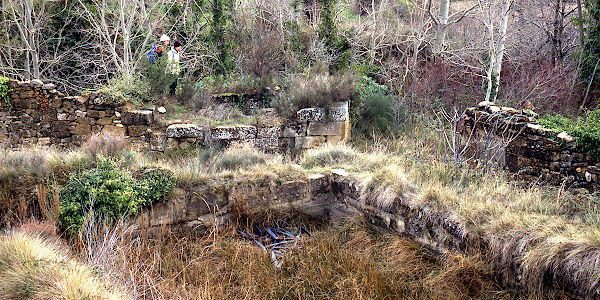

By the look of the remaining walls the mill must have been built or rebuilt in several phases. The section with the cubo features huge regularly cut ashlar stones carefully stacked. The section where the fulcrum of the cantilever press is situated (3 left, 5 near), has a much more irregular quality because it is constructed with natural stones showing a wide range of shapes and sizes. The next section which is farthest away from the cubo, shows still another approach in building walls. Columns were erected, built from ashlar stones and the space between these columns is filled up with adobe.
Within the walls more columns and walls were needed to support the roof. These were built from either ashlar stones or thin bricks.
The grinder (6) was turned around with water. This is rather uncommon in oil mills of the region. In most almazaras the roller crusher was driven by an animal. The underhouse below the grinder (10, 12) is filled with silt almost to its ceiling, but as far as we can judge, the wooden wheel shaft is in good condition. The wheel might still be present and resting in good shape below the silt.
Left and right of the wheel rods can be seen (12) which remind of the control rods — to lift and to halt the wheel — in the cárcavo of a flour mill. There is no use for them in an olive grinder, though. One of the rods may control the hatch to cut the flow, but then the nozzle, botana, must be mounted on one of the sides, which is never the case elsewhere.

